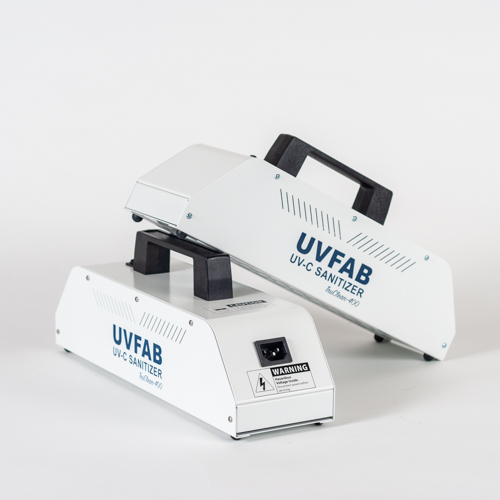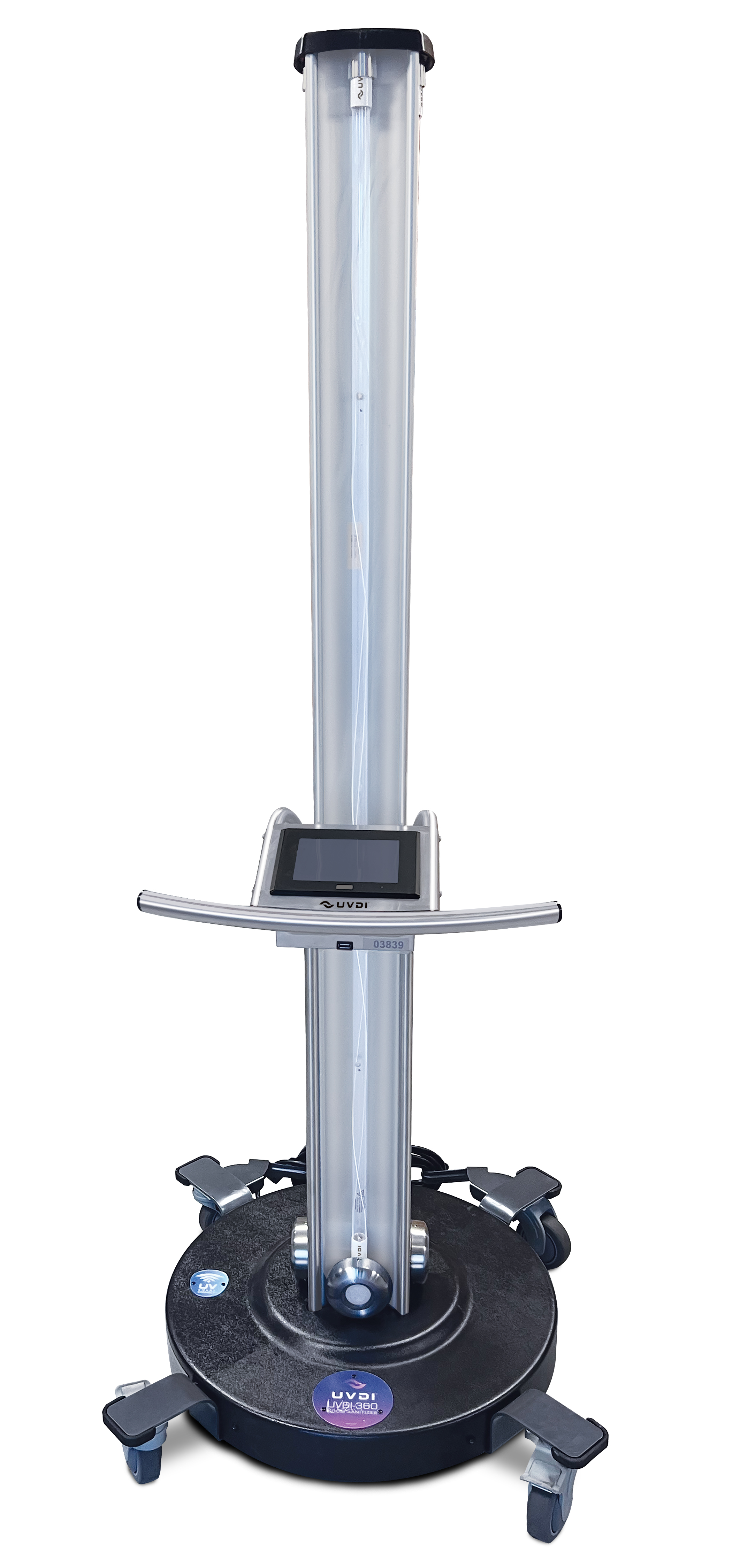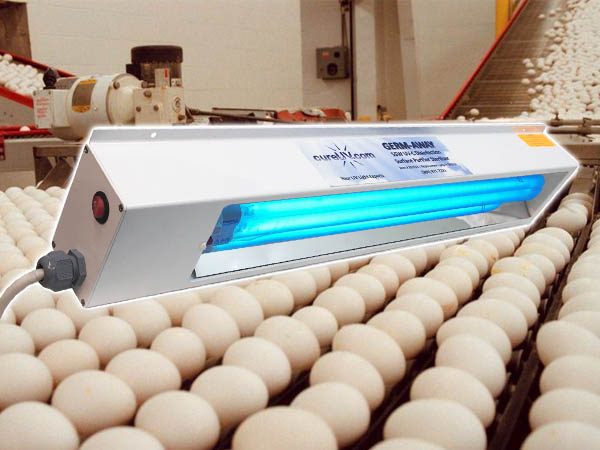Utilizing the Power of UV Surface Disinfection: A Comprehensive Overview for Healthier Spaces
Utilizing the Power of UV Surface Disinfection: A Comprehensive Overview for Healthier Spaces
Blog Article
Using the Potential of UV Disinfection: Safeguarding Health and Health
As the world grapples with the ongoing pandemic and the continuous danger of transmittable conditions, the relevance of maintaining health and hygiene has actually never been extra obvious. In this context, utilizing the possibility of UV sanitation emerges as a promising remedy. UV disinfection, a technology widely made use of in various industries, has proven reliable in removing hazardous virus. Nevertheless, there is a lot even more to discover behind the science of UV sanitation and its applications. From comprehending the systems at play to implementing this technology in our every day lives, this conversation intends to drop light on the possibility of UV sanitation and its duty in protecting our health and health.
Understanding UV Disinfection
UV disinfection is a very reliable and extensively utilized method for guaranteeing and eliminating unsafe pathogens health and hygiene. This technique utilizes ultraviolet (UV) light to suspend microbes by damaging their DNA and stopping them from duplicating. UV disinfection is especially effective versus microorganisms, viruses, and other microorganisms that can trigger infections and illness.
The concept behind UV disinfection is simple yet effective. When UV light is discharged at a specific wavelength, it passes through the microbe's cell wall surface and interrupts its hereditary material. This procedure, called photodissociation, leads to the formation of thymine dimers, which prevent the microbe from reproducing and rendering it harmless. UV sanitation can be used in various setups, consisting of water treatment plants, medical care facilities, food processing industries, and air filtration systems.
Among the benefits of UV sanitation is its ability to successfully and effectively eliminate a vast array of virus without the demand for chemicals or ingredients. Unlike various other sanitation approaches, such as chlorine or ozone, UV sanitation does not introduce dangerous spin-offs or chemical residues right into the environment. Furthermore, UV disinfection is a non-contact process, which suggests that it does not require physical contact with the bacteria, lessening the danger of cross-contamination.

The Scientific Research Behind UV Sanitation
The effectiveness of UV sanitation exists in its capacity to interrupt the genetic product of microbes, making them not able to reproduce and consequently eliminating their harmful potential. UV, or ultraviolet, radiation is a form of electro-magnetic radiation with wavelengths shorter than noticeable light. It is categorized into three kinds: UV-C, uv-b, and uv-. UV-C radiation, especially, has the fastest wavelength and the highest power. This high-energy UV-C radiation is most reliable in sanitation applications because it can penetrate the cell wall surfaces of bacteria and damage their DNA or RNA.
When bacteria are revealed to UV-C radiation, the energy is absorbed by their hereditary material, triggering bonds to damage and creating chain reactions that disrupt their ability to reproduce. This protects against the microbes from duplicating and spreading infection. UV sanitation is particularly reliable against viruses, fungi, and bacteria, including usual virus such as Escherichia coli, Salmonella, and Flu.
The science behind UV sanitation is supported by substantial research and research studies. It has been revealed that direct exposure to a sufficient dosage of UV-C radiation can achieve a high degree of disinfection, often going beyond 99.9% effectiveness in eliminating bacteria. However, it is crucial to note that the effectiveness of UV disinfection depends upon different aspects, including the intensity of UV-C radiation, direct exposure time, distance from the UV source, and the susceptibility of the microbe to UV radiation.
Applications of UV Sanitation
Offered the comprehensive study and efficacy of UV disinfection in her latest blog disrupting the hereditary material of microorganisms, it is essential to explore the various functional applications of this technology. UV disinfection has verified to be a valuable device in a vast array of sectors where keeping a secure and tidy setting is vital.
One major application of UV sanitation is in healthcare setups. UV light can be utilized to disinfect surface areas, tools, and also the air in health centers and medical facilities. This helps to decrease the danger of healthcare-associated infections and makes sure a more secure setting for patients and medical care employees.
Another important application is in the food and beverage market. UV sanitation is made use of to deal with water and remove hazardous microorganisms, such as E. coli and Salmonella, from the production process. uv surface disinfection. This guarantees the security and quality of the products we consume
UV disinfection is also extensively made use of in water therapy plants and wastewater therapy centers. It is an efficient technique for destroying hazardous bacteria, viruses, and bloodsuckers that can be existing in water sources. This helps to offer clean and safe drinking water to communities and protect the environment from air pollution.
In addition, UV disinfection is employed in the pharmaceutical industry to decontaminate tools and preserve the stability of products. It is also used in laboratories and study centers to protect against contamination and ensure accurate results.
Advantages of UV Disinfection Modern Technology
One remarkable advantage of utilizing UV disinfection technology moved here is its ability to effectively get rid of microbes without the usage of extreme chemicals. This is especially beneficial in different settings, such as medical care facilities, water treatment plants, and food handling sectors, where the visibility of unsafe virus positions a considerable risk to public wellness and safety and security.
Unlike typical disinfection methods that depend on chemicals like chlorine or ozone, UV sanitation technology utilizes ultraviolet light to target and damage the DNA of bacteria, successfully neutralizing their capacity to duplicate and trigger infections. This process not just removes the requirement for potentially hazardous chemicals yet likewise reduces the threat of chemical deposit or by-products remaining in the cured atmosphere.

Moreover, UV disinfection innovation is eco-friendly. As it does not rely upon making use of chemicals, it gets rid of the demand for their disposal, transportation, and production, lowering the total carbon impact related to disinfection procedures. Furthermore, UV disinfection systems have a longer lifespan compared to chemical-based approaches, causing much less regular replacement and additional decreasing waste.
Executing UV Disinfection in Life
To efficiently implement UV sanitation in day-to-day live, organizations and people can integrate portable UV sterilizing devices right into their health routines and cleaning up practices. These devices are made to produce ultraviolet light, which has been proven to eliminate or suspend a vast array of bacteria, including bacteria, viruses, and fungis. By utilizing mobile UV sterilizing devices, people can decontaminate frequently touched items and surfaces, such as mobile phone, doorknobs, secrets, and laptop computers, minimizing the risk of spreading out germs and infections.
Along with integrating mobile UV sterilizing tools, it is very important to follow appropriate standards and referrals for effective UV sanitation. This includes making certain that the device is used appropriately and for the suggested duration to attain optimal disinfection outcomes. It is also critical to read this article prioritize precaution, such as putting on protective eyeglasses and staying clear of direct exposure of the UV light to the skin.

Additionally, organizations can implement UV sanitation innovation in various setups to improve hygiene techniques. As an example, medical facilities and medical care centers can use UV sanitation robotics to sanitize patient areas, operating theaters, and various other high-touch areas. Food handling markets can incorporate UV disinfection systems right into their production lines to boost food safety and prevent contamination.
Verdict
In verdict, UV sanitation technology holds terrific potential in protecting health and wellness and health. With its numerous benefits, UV sanitation is a beneficial tool for keeping a tidy and healthy atmosphere.
Unlike other sanitation techniques, such as chlorine or ozone, UV disinfection does not present damaging spin-offs or chemical residues right into the atmosphere. It is crucial to note that the effectiveness of UV disinfection depends on various aspects, including the intensity of UV-C radiation, exposure time, distance from the UV resource, and the sensitivity of the bacterium to UV radiation.
Another advantage of UV sanitation modern technology is its capacity to give quick and continual disinfection. Unlike manual cleansing approaches, which can be lengthy and need significant labor, UV disinfection systems can be automated and run constantly, making sure constant sanitation without human intervention.To efficiently implement UV sanitation in everyday life, companies and individuals can incorporate mobile UV sterilizing devices right into their health routines and cleansing methods.
Report this page